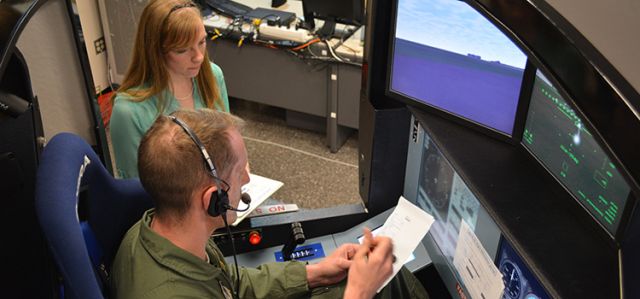Closing the Loop on Aircraft Conceptual Sizing Using the Merlin Flight Simulator
Document Type
Conference Paper
Publication Date
1-2015
Publication Source
53rd AIAA Aerospace Sciences Meeting
Abstract
How many of us would learn a great deal about conceptual sizing by having our designs flight tested by experimental test pilots? Aerospace Concentration students at the University of Dayton are asked to do individual aircraft conceptual sizing projects. Each student begins with a historical survey within a category and class of their choosing.
Allowing students to select and create their own requirements aligns with research that shows increased ownership in their curriculum and course content results in more profound engagement and motivation. The students then identify niches that exist within their category and class of interest. They subsequently write their own requirements, specifications and Requests for Proposals to create and aircraft to fill one of those niches. Then more traditional conceptual sizing procedures are followed to calculate the primary geometric, aerodynamic, structural, weight, inertial, flight dynamic, control and performance characteristics of their airplanes. It is at this point in the process that their education diverges slightly from the norm.
The parameters that result from the conceptual sizing are used as inputs into the Graphical User Interface of the Merlin 521 Engineering Flight Simulator. The students must then attempt to taxi, takeoff, fly, and land their own airplanes and in general see how their airplanes handle in a physics-based flight environment in three-dimensional space. This experience alone is enough to close the loop on initial conceptual sizing in a manner not possible through more traditional means, yet their education is not quite complete! Volunteers from the local section of the Society for Experimental Test Pilots fly the students' designs in front of them and provide detailed feedback on the handling characteristics of their designs relative to their design objectives. At this point, students will delve more deeply into the factors associated with making their airplanes handle more closely to test pilot expectations for a given category and class of airplane.
The students consistently rate this as one of the most fulfilling educational experiences of their undergraduate career.
ISBN/ISSN
978-1-62410-343-8
Copyright
Copyright © 2015, American Institute of Aeronautics and Astronautics
Publisher
American Institute of Aeronautics and Astronautics
Place of Publication
Kissimmee, FL
eCommons Citation
Altman, Aaron, "Closing the Loop on Aircraft Conceptual Sizing Using the Merlin Flight Simulator" (2015). Mechanical and Aerospace Engineering Faculty Publications. 116.
https://ecommons.udayton.edu/mee_fac_pub/116
COinS




Comments
Permission documentation is on file.